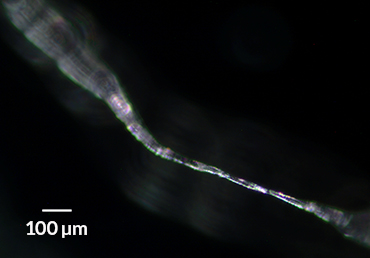
FAR-FLUNG TRASH Researchers measured an atmospheric deposition rate of microplastics at a remote site in the Pyrenees Mountains (shown) that was similar to rates measured within Paris.
G. Le Roux
- More than 2 years ago
Plastic pollution from Paris doesn’t necessarily stay in Paris.
Tiny bits of plastic that originated in cities were carried by wind to a remote mountain location at least 95 kilometers away, a study finds. It’s the first demonstration that microplastics, tiny particles ranging from a few nanometers to 5 millimeters in size, can travel far through the atmosphere.
Even more startling is how much microplastic fell from the sky in such a remote location, the researchers say. The study’s findings suggest that the rain of microplastics in some far-flung places may rival that of some large cities.
“We found them somewhere they shouldn’t be,” says atmospheric and environmental scientist Deonie Allen of EcoLab in Castanet-Tolosan, France, who coauthored the study.
The researchers set up two types of atmospheric deposition collectors at the Bernadouze meteorological station, in the Pyrenees Mountains between France and Spain. The scientists visited the site roughly once a month from November 2017 to March 2018 to retrieve the samples, and then analyzed the collected particles to separate, identify and count the bits of plastic.
An estimated 365 microplastic particles per square meter per day, on average, were deposited at the site, the team reports April 15 in Nature Geoscience. That’s a rate that “is similar to what’s happening in Paris,” Allen says.

At the Pyrenees site, however, most of the plastic bits were smaller than 25 microns and consisted mostly of polystyrene and polyethylene fragments, common in many packing materials.
Polystyrene is particularly susceptible to degradation by weathering or by ultraviolet rays from the sun, making worn-down bits more easily transportable by wind, the researchers say. At the Pyrenees site, periods of higher wind speed as well as brief bursts of intense rain or snow appear to be linked to higher deposition rates.
Although the study couldn’t identify the source of the plastics, a simulation of wind speeds and directions during the study time period suggested that the plastics traveled at least 95 kilometers to reach the site. But it’s likely that the plastics came from farther away, Allen says, because no densely populated, industrialized cities fall within that region.
“Unfortunately, [the study] confirms the ubiquitous contamination of our environment by microplastics,” says Johnny Gaspéri, an environmental scientist at the Université Paris-Est Créteil.
The team plans to expand the research, collecting more detailed samples more frequently and from other remote locations. “It’s not just local pollution, or something only happening in cities,” says study coauthor Steve Allen, also an atmospheric and environmental scientist at EcoLab. “Invisible pollution is transporting its way around the world.”







